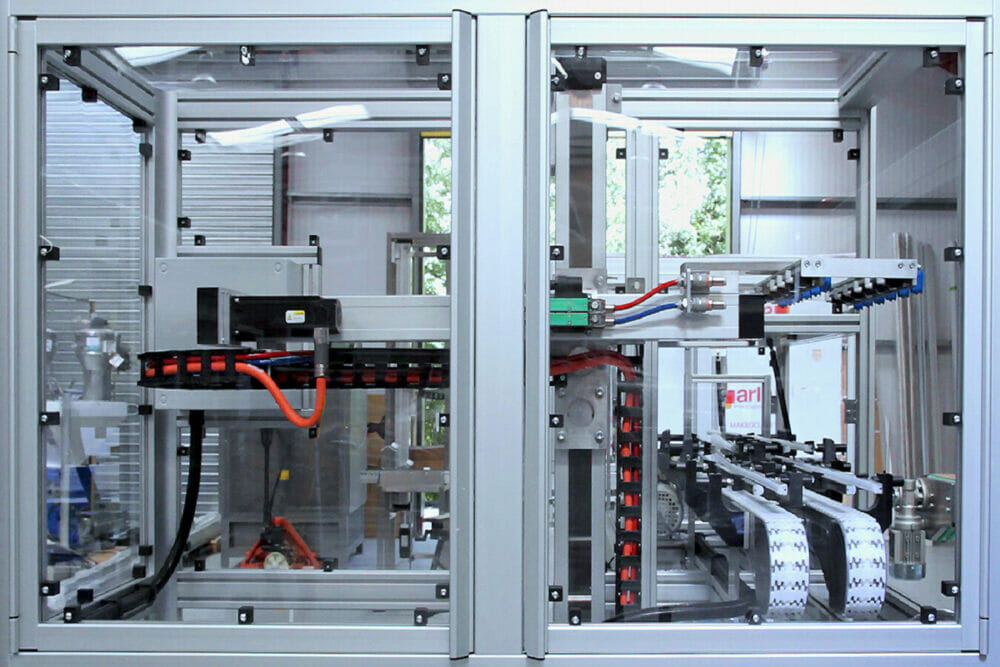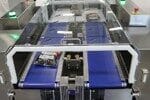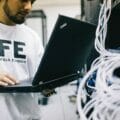By
Japh Humphries, UK Sales & Commercial Manager, Matara UK Ltd.
Linear motion systems are used in industrial automation applications to move parts of a machine in a straight line – up and down or back and forth – in a pre-determined and controlled manner. Linear motion systems ensure smooth, accurate, reliable movement, and are simple and cost-effective to maintain.
Linear motion systems usually consist of a controller (either a computer or a stand-alone electronic device), a motor and the actuator which moves the load; the most common actuators being ball screw linear and belt driven actuators.
A ball screw linear actuator converts rotational motion into linear movement using a threaded shaft and ball bearings. The shaft of the ball screw includes a helical path around which the ball bearings move, behaving like a screw but with very little friction. The ball assembly behaves as the nut, with the threaded shaft acting as a screw. Manufactured to higher tolerances than some of the other linear motion drive options, ball screw linear actuators are a popular choice for high precision applications where accuracy and control are critical. They are also a good option for high load applications and for where thrust force is required. The main drawback of ball screw linear actuators is that, due to the need for the balls to be recirculated, the overall size of the device is larger and bulkier than other options.
With belt driven actuators, an electric motor drives a shaft and wheel, and the wheel is engaged with a toothed belt drive. As the motor rotates the shaft, the belt moves, converting the rotation to a linear motion, which moves the carriage of the actuator forwards or backwards along a single axis. Belt driven linear actuators combine high speed with both accuracy and repeatability. They perform better than screw actuators for lower loads, high speed/long stroke applications.
Matara offers a range of options for linear motion control, including belt driven and ball screw linear actuators with either rolled ball screws or ground ball screws. We also offer linear guides and rails to be used for support and guidance in linear motion systems, which are designed to be used in conjunction with a screw assembly or an alternative linear motion drive.

Highly versatile, linear motion is used anywhere a repetitive process needs automating, including machine tools, assembling and packing, testing and inspection, and robotic systems. The type of system used depends on a range of factors but the key determining factors will be the speed of the process, the stroke length and the load.
For simple tasks, pneumatic systems can provide a cost-effective solution. These convert compressed air into a linear motion, mostly with a piston rod. However, for applications that require higher degrees of accuracy and repeatability electric linear motion systems are needed. With electric linear motion systems, you can control more parameters such as force velocity, acceleration, and deceleration. Take gantry robots in semi-conductor manufacturing and in packaging as a prime example. The gantry – or Cartesian – robots often use two or three rail axis working in parallel to ensure greater movement capability. An electric linear ball screw actuator will enable movement across the X, Y and Z-axis.
When it comes to more unusual or very demanding applications, then additional measures may be required.
In the case of corrosive environments, such as battery plants and marine applications, along with sites where regular wash downs are the norm, including pharmaceutical manufacturing and food processing plants, extra component protection is required. In these cases, we recommend Armoloy TDC® coated linear rail and ball screws for maximum longevity. This is a hard (78Rc), thin, dense chromium coating with a micro-nodular surface texture which substantially reduces friction for smoother movement over rolling surfaces, as well as extending wear life by nearly 50% when compared with a typical hard chrome coating.
For non-standard applications, a bespoke system should be considered as this will provide you with maximum flexibility when designing your project. In fact, all systems benefit from bespoke elements as otherwise their effectiveness can be compromised. As a UK based company, Matara offers off the shelf and bespoke linear motion products, including custom built linear actuators and aluminium frames (including machine guarding and robot cells) and custom cut linear rail and ball screws, the latter of which can also be custom machined.
Matara designs and manufactures pneumatic and linear automation products, which are available from stock or can be custom built to order.
01684 850000








